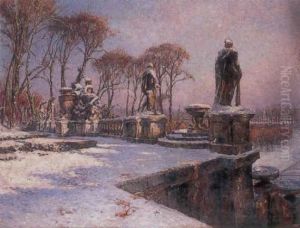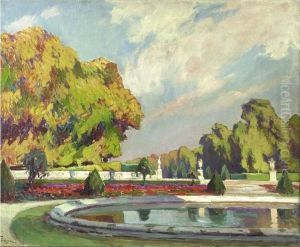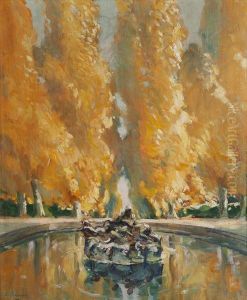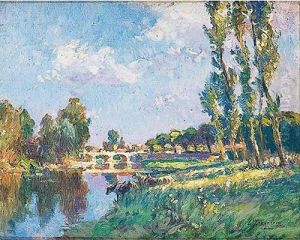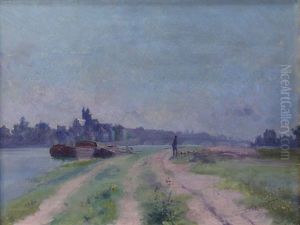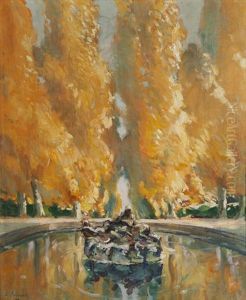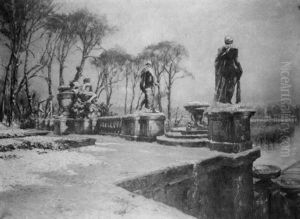Paul Leon Frequenez Paintings
Paul Léon Fréqùenez, often misattribated due to the rarity of his works and the obscurity of his life, was a French artist and illustrator whose career spanned the late 19th and early 20th centuries. Born in 1880, Fréqùenez emerged during a period of significant artistic development in Europe, characterized by movements such as Impressionism, Post-Impressionism, and the burgeoning modernist aesthetic.
Initially, Fréqùenez found his artistic footing in the realm of illustration, contributing to various publications and developing a refined, somewhat romantic style. His work often featured landscapes and figural compositions, executed with a delicate touch and an eye for the interplay of light and shadow. Fréqùenez's illustrations were known for their lyrical quality and often evoked the traditions of earlier 19th-century French art, while also incorporating the more fluid and expressive line work that would come to define Art Nouveau.
Transitioning into the 20th century, Fréqùenez's style evolved as he began to engage more directly with the avant-garde movements of his time. His later work demonstrated an interest in the simplification of forms and a bolder use of color, which reflected the influence of artists such as Paul Cézanne and Henri Matisse. Despite this, Fréqùenez never fully aligned with any single artistic movement, instead maintaining a degree of independence that allowed him to explore various styles and techniques.
Fréqùenez's career was cut short by his untimely death in 1929. Despite the brevity of his life, he left behind a body of work that, while not widely known, has been appreciated for its contribution to the transitional period of late 19th and early 20th-century French art. His legacy persists in private collections and among a small number of connoisseurs who recognize his unique contribution to the field of illustration and painting.

